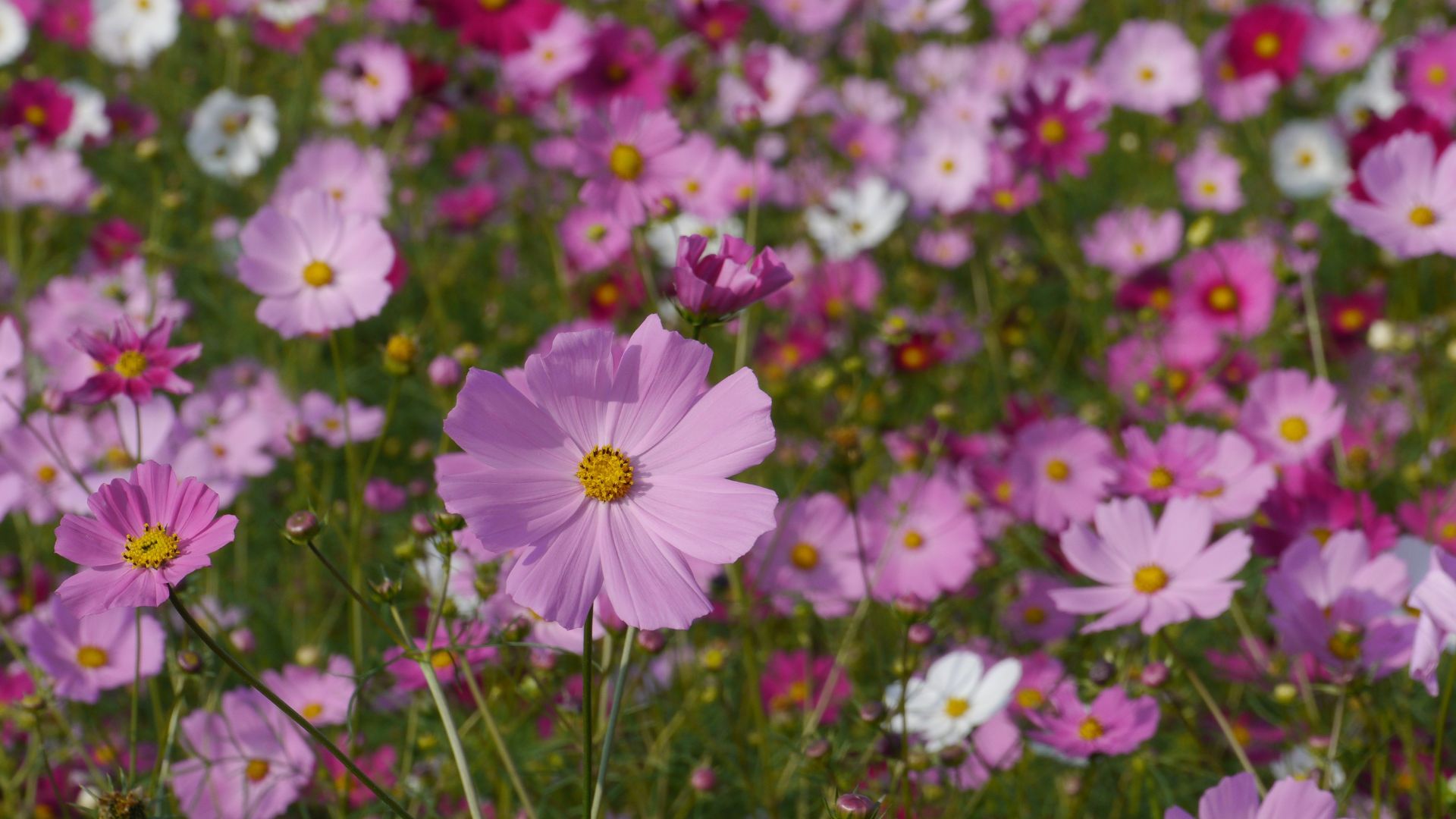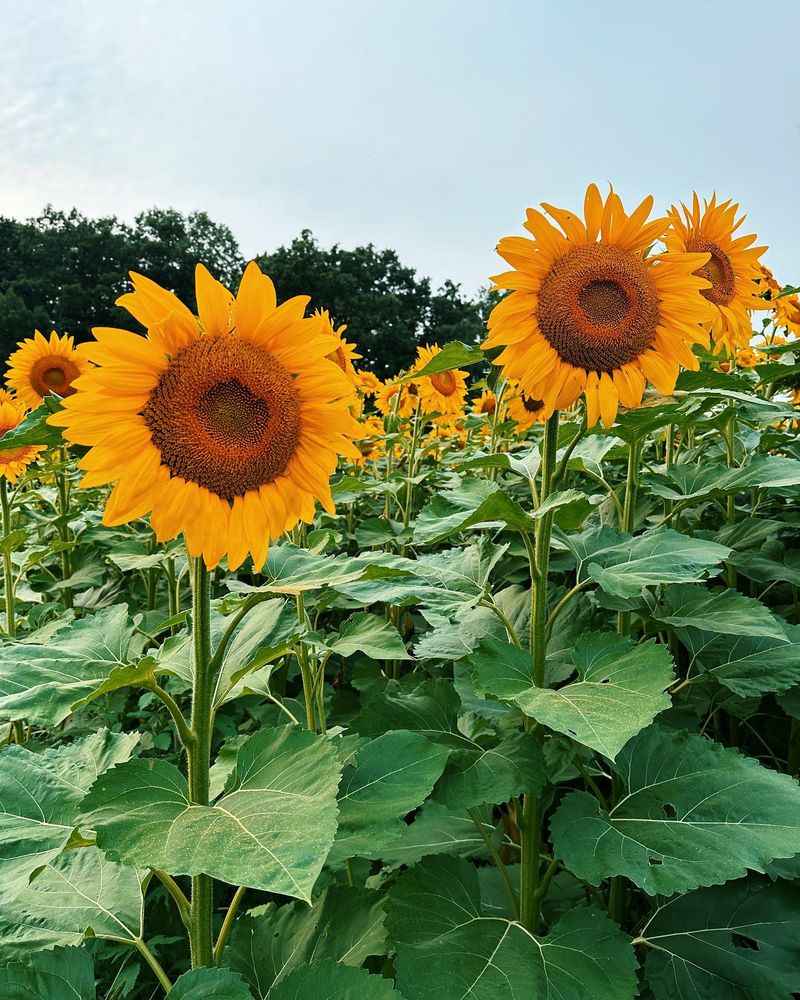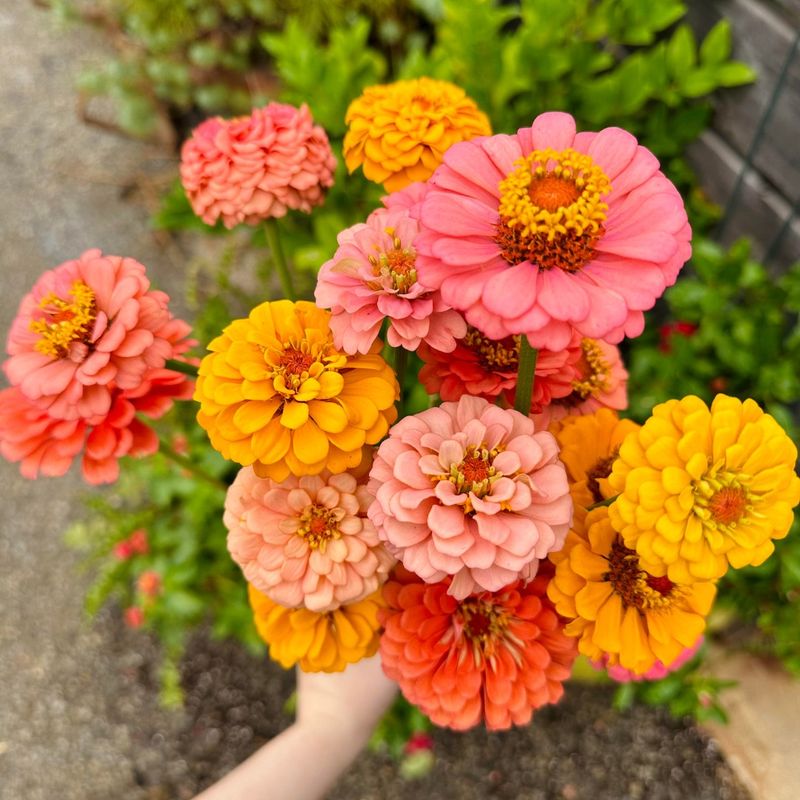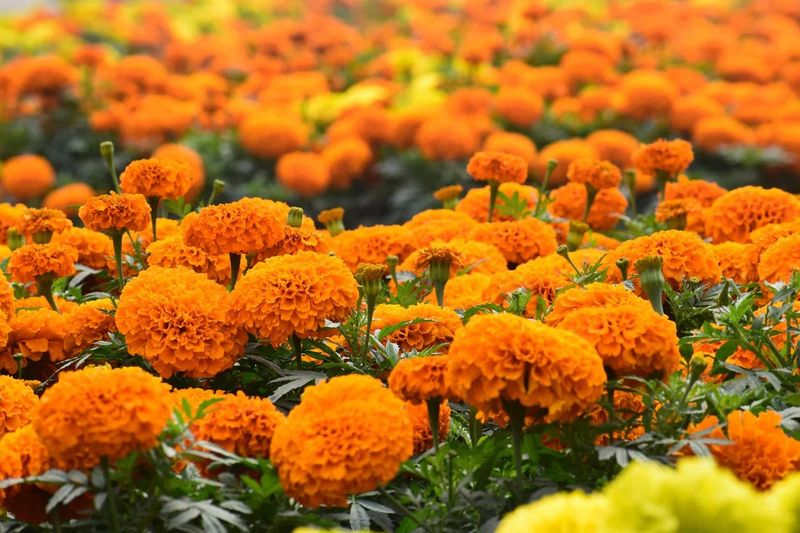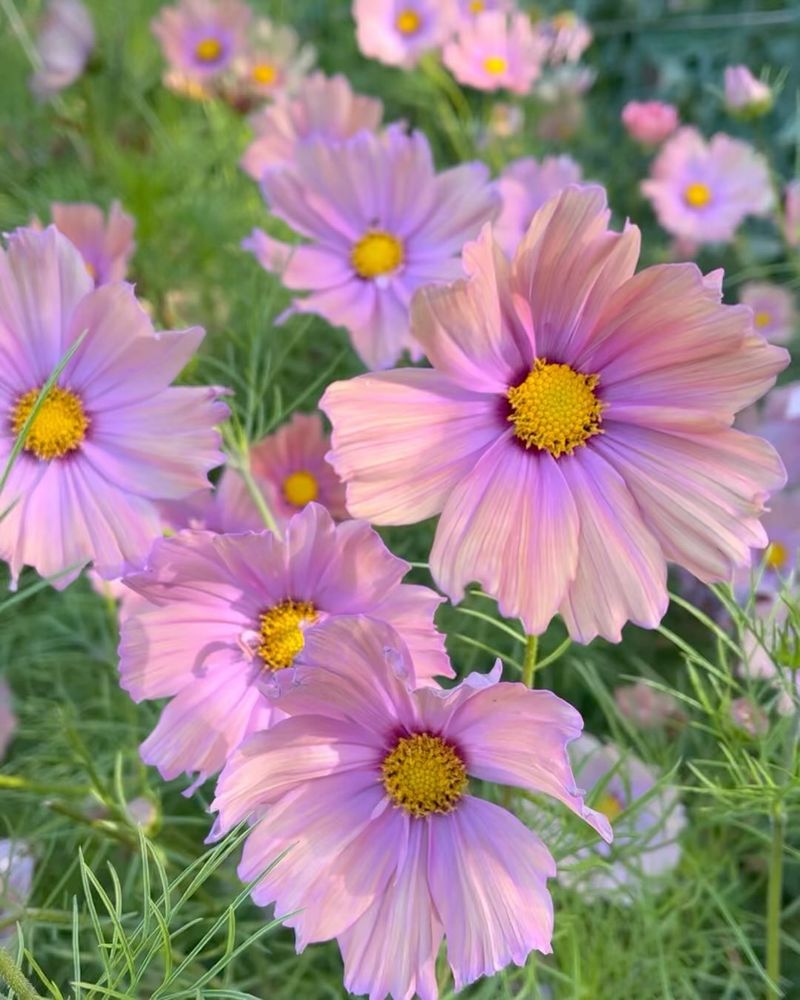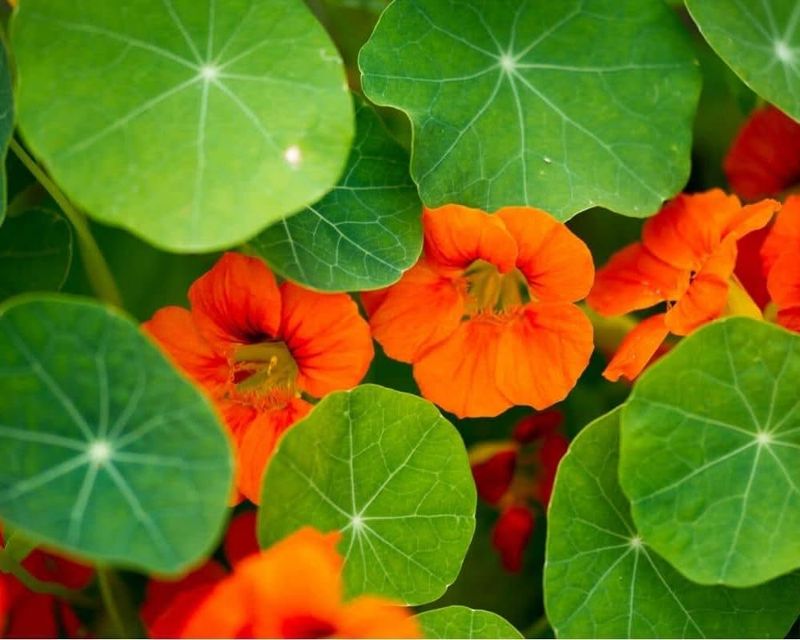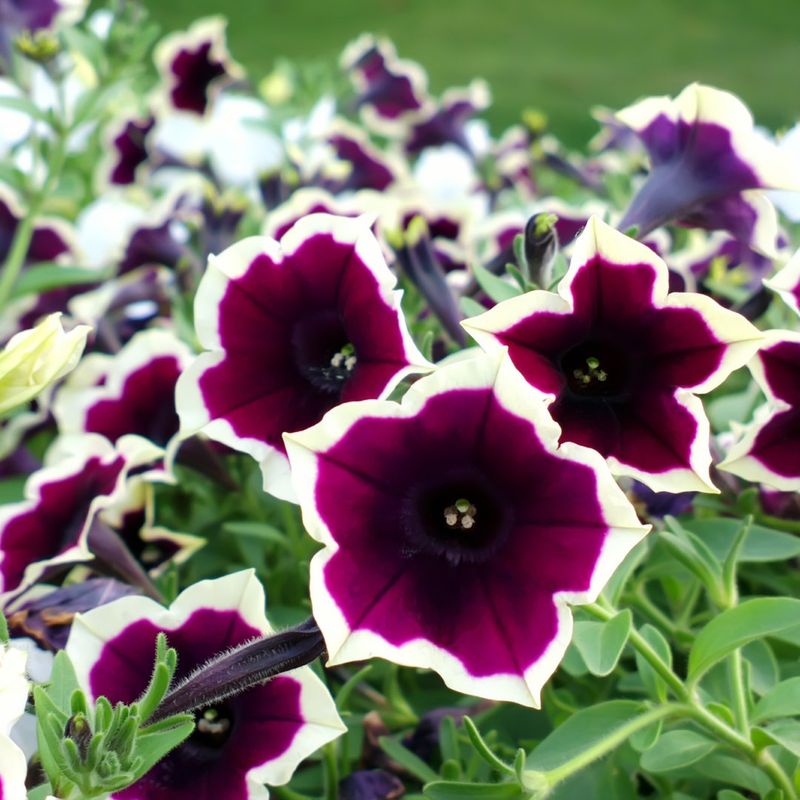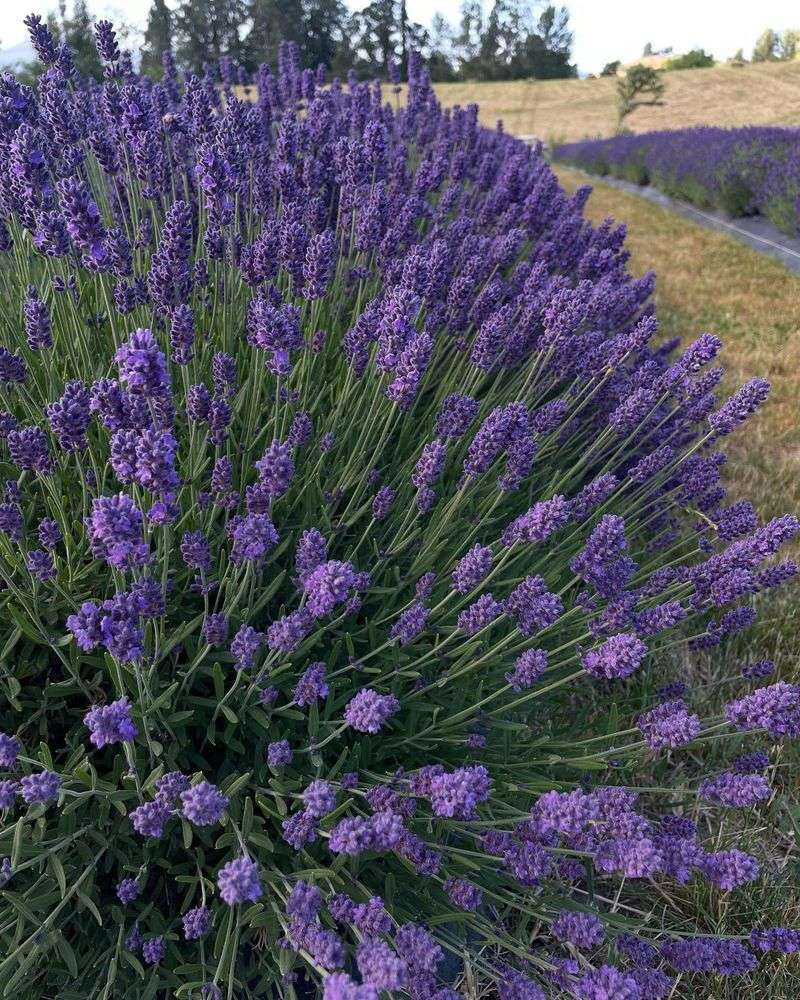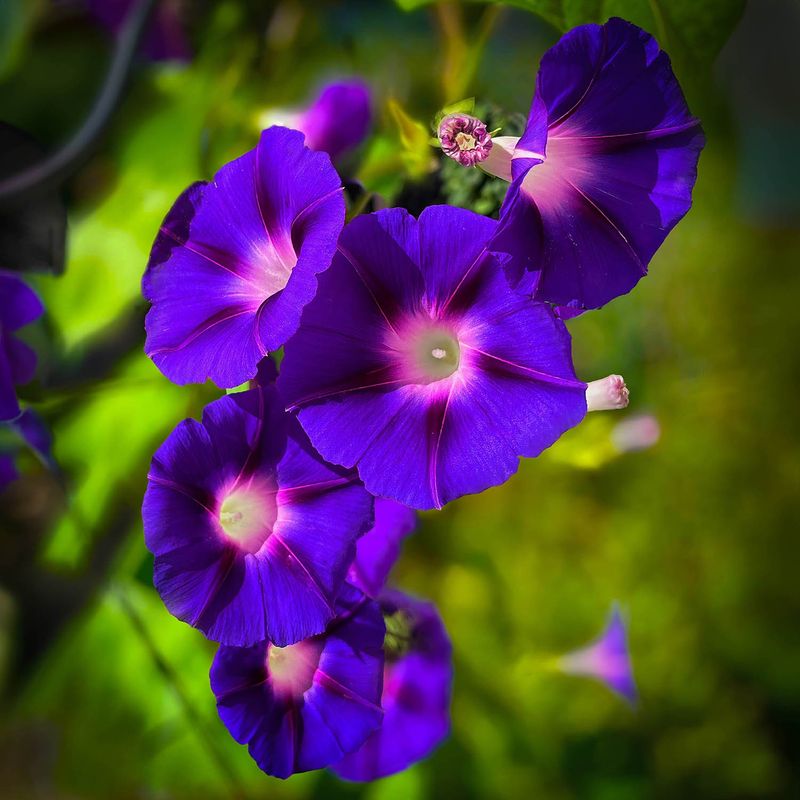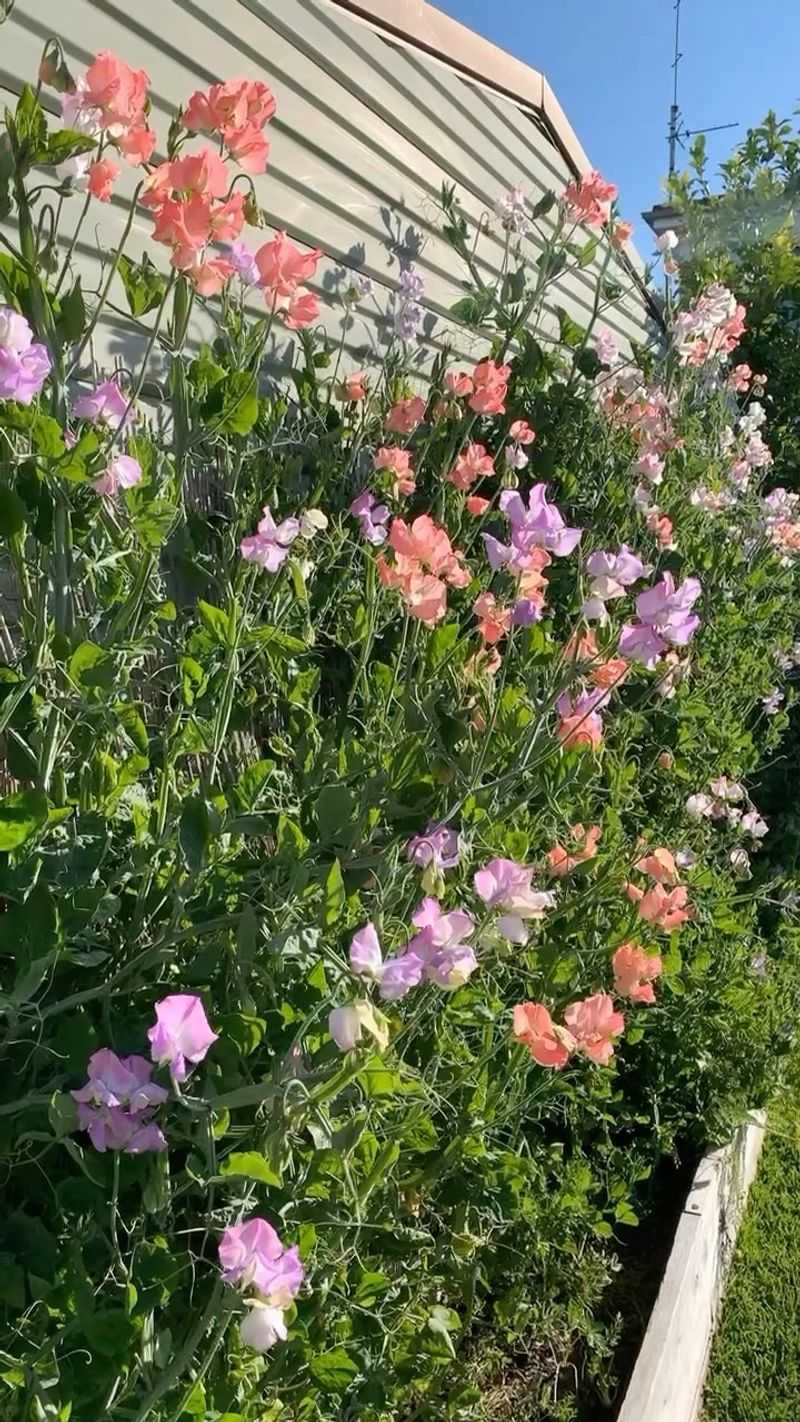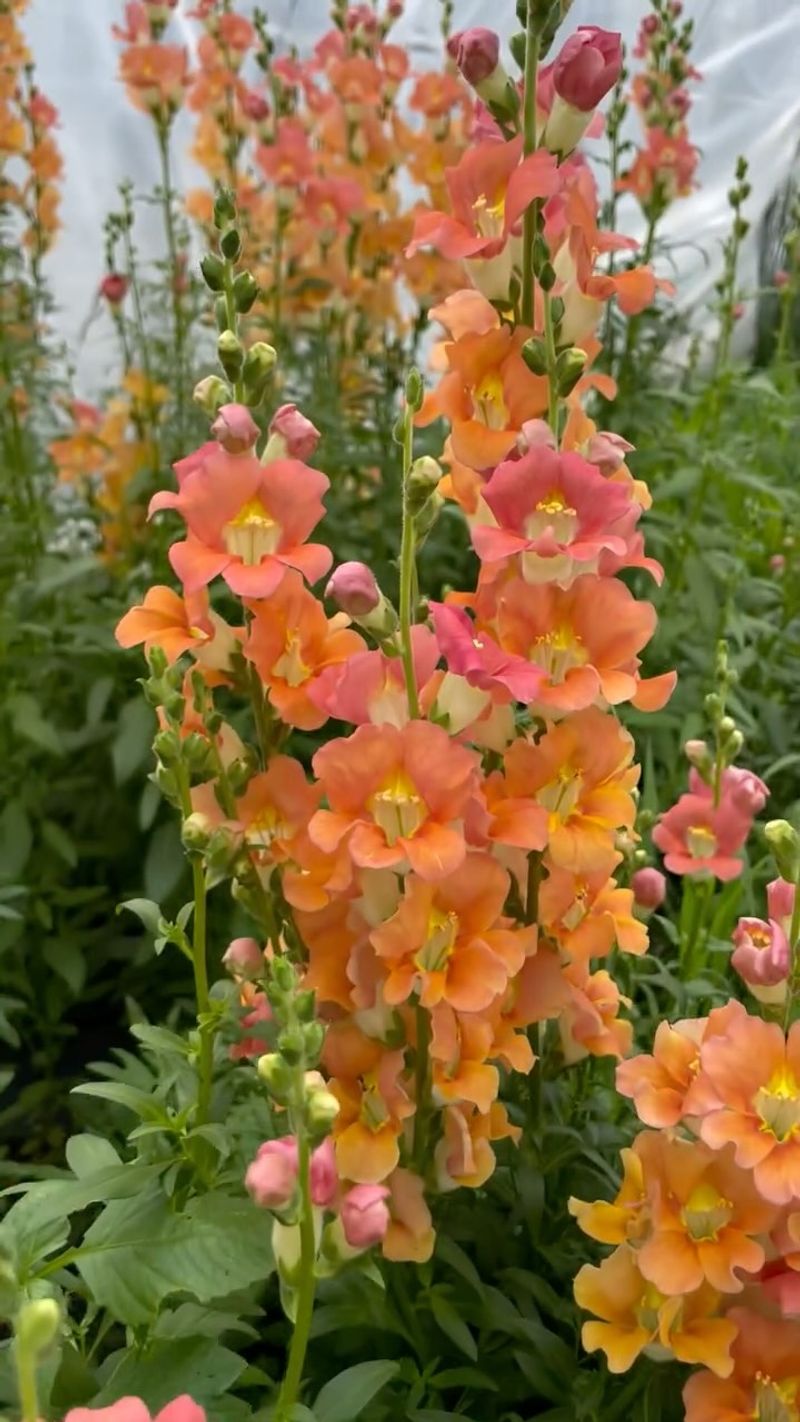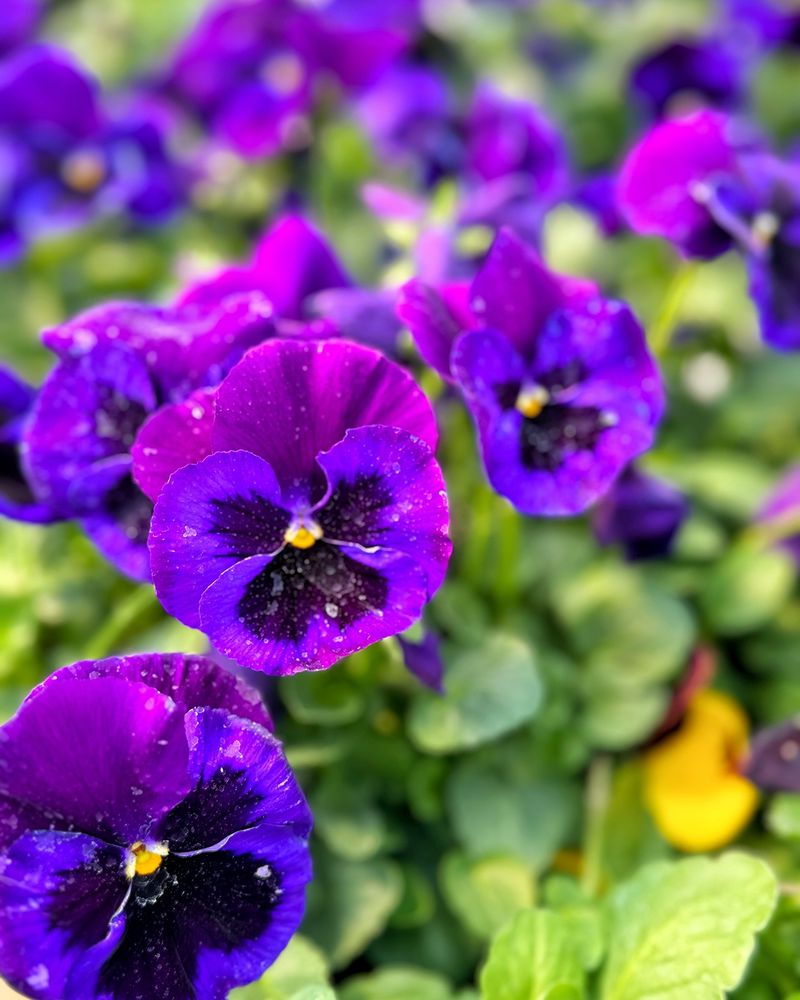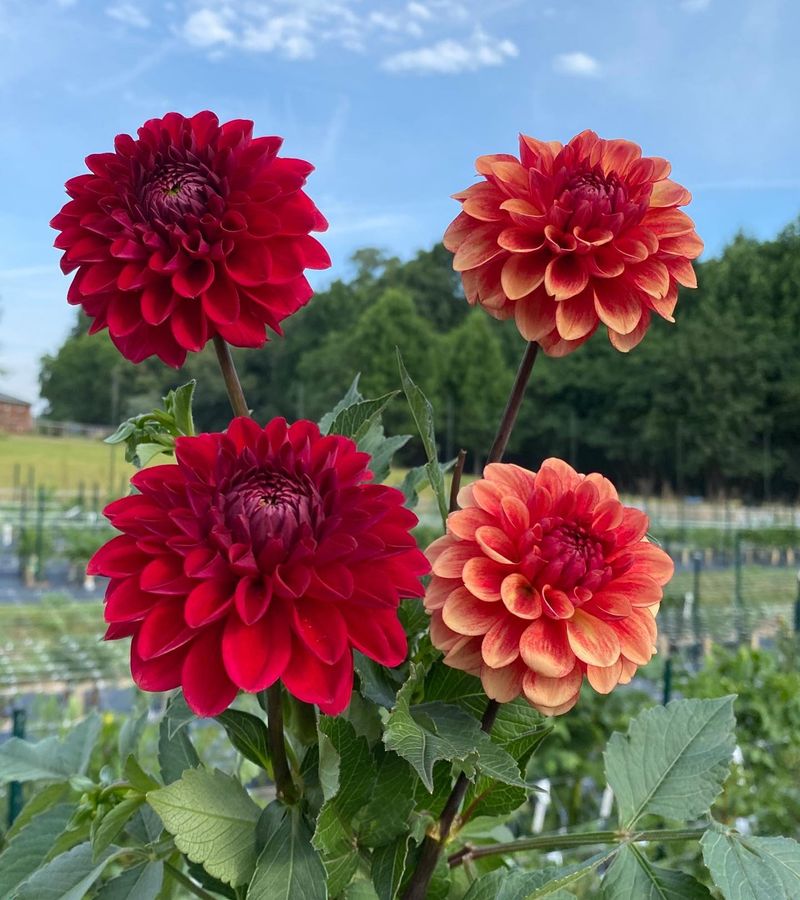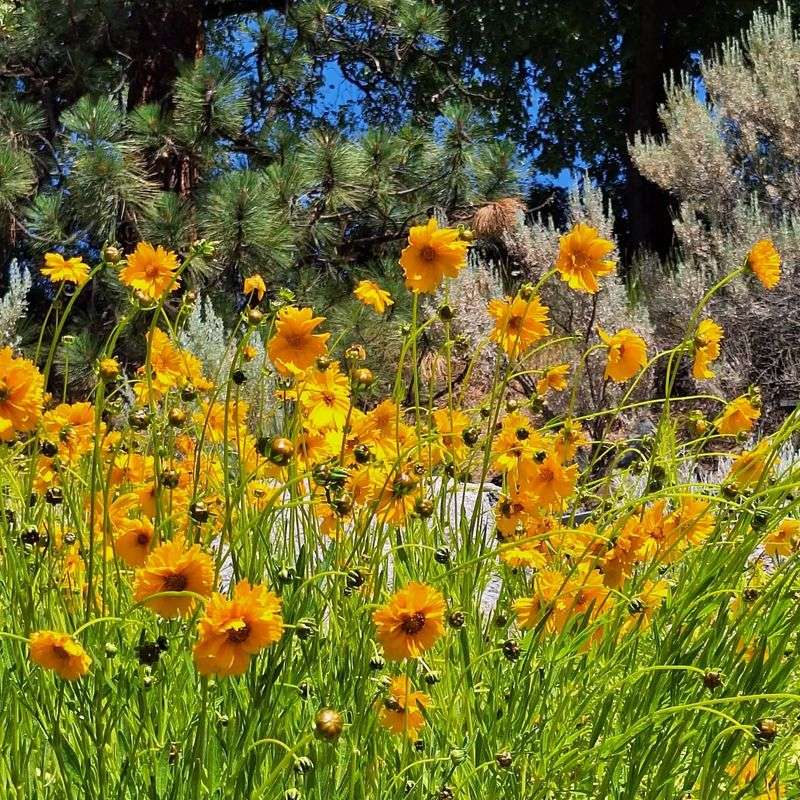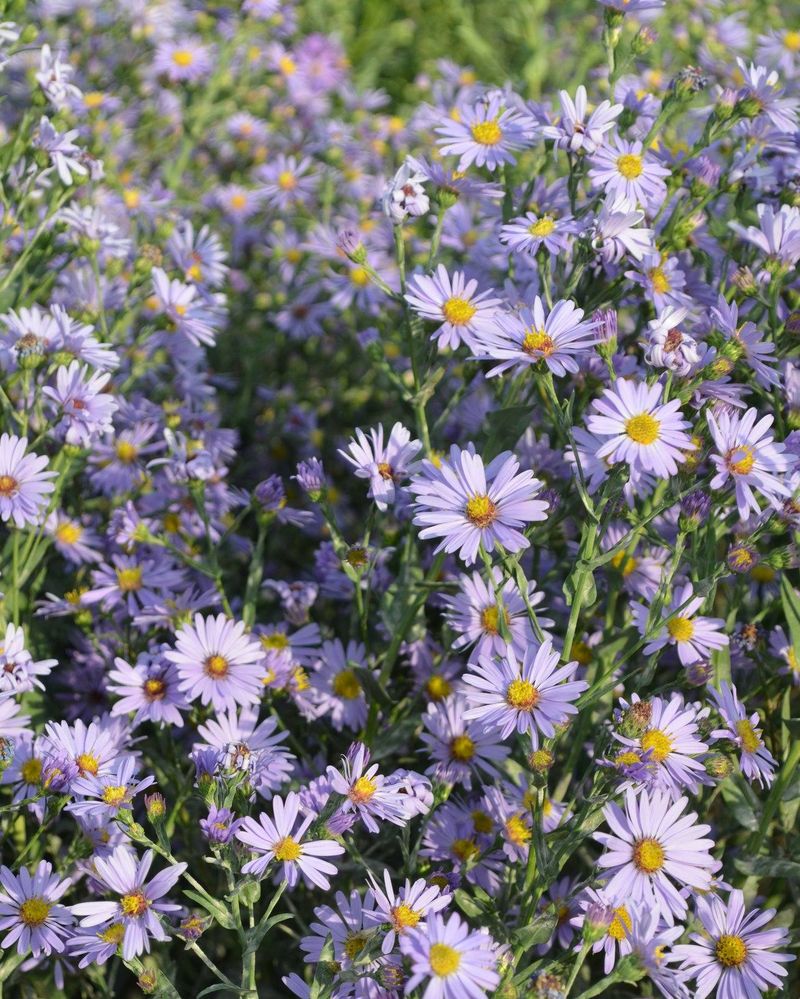May truly feels like the garden’s wake-up call—longer days, warmer soil, and the promise of bright blooms just around the corner. It’s one of my favorite times to get out and sow flower seeds, especially because everything you plant now is set to shine by summer.
The beauty of sowing in May is that you’ve got so many choices. And you don’t need to be a pro—many of these are beginner-friendly and don’t require a complicated setup to thrive.
Here you’ll find lovely flowers that are perfect to sow this month, complete with tips to help them grow strong and happy. These picks will bring joy all summer long.
1. Sunflower
Sunflowers are a staple for any summer scene, known for their towering height and cheerful blooms. Plant them in a spot with full sun, and they’ll reward you with tall, sturdy stems. They’re not just about looks; sunflowers can also attract beneficial insects to your garden.
These iconic flowers are surprisingly easy to grow, making them perfect for beginners. Be sure to plant them in well-draining soil to prevent waterlogging. Their seeds are a favorite for birds, offering a natural way to attract wildlife.
Keep an eye on them as they grow. They may need staking to support their height, especially in windy areas. Watching them turn their heads toward the sun is a joy for any gardener.
2. Zinnia
These are beloved for their rainbow of colors and long blooming period. They thrive in sunny spots with well-draining soil. For continuous blooms, deadhead regularly and enjoy the show from midsummer to frost.
These flowers are perfect for cutting gardens or as a bright addition to any border. Their variety of forms, from cactus-like to dahlia-flowered, offers something for every taste. Easy to grow from seed, they’re a great choice for new gardeners.
Zinnias also attract butterflies, adding an extra layer of life to your outdoor area. Consider planting them in groups for a stunning visual impact.
3. Marigold
Flowers known for their pest-repelling qualities. Plant them in full sun, and they’ll thrive in almost any soil type. Their bright blooms can light up any space from early summer to the first frost.
These flowers are easy to grow and maintain, making them ideal for beginner gardeners. Regular watering and occasional deadheading will keep them looking their best. Marigolds also make excellent companion plants, helping to protect vegetables from pests.
Their distinct scent is both a deterrent for harmful insects and a nostalgic aroma for many gardeners. Marigolds can be used to edge pathways or fill gaps in beds with their cheery presence.
4. Cosmos
Easygoing flowers, thriving in poor soil and requiring little care. They flourish in full sun, producing airy blooms that dance in the wind. Sow them in May for a summer of pastel colors.
Their feathery foliage adds texture to any planting scheme, and they’re superb at filling gaps in borders. Cosmos are perfect for cutting, bringing their soft beauty indoors. Keep an eye on deadheading to prolong their blooming period.
These flowers are beloved by pollinators like bees and butterflies, enhancing the ecological value of your garden. Consider mixing different colors for a delightful display.
5. Nasturtium
These are delightful climbers with a knack for brightening up any space. They thrive in poor soil and full sun, making them a low-maintenance option for busy gardeners. Their leaves and flowers are edible, adding a peppery twist to salads.
These vigorous blooms can cascade from hanging baskets or climb up trellises. Their bright flowers attract pollinators, supporting local biodiversity. Nasturtiums are also known for deterring pests such as aphids.
Keep them well-watered to encourage more flowers, but avoid over-fertilizing, which can lead to beautiful foliage instead of blooms. They’re a joyful addition to any summer planting scheme.
6. Petunia
Perfect for containers or hanging baskets. They thrive in sunny positions and well-draining soil. Their cascading habit makes them ideal for adding layers of color to your planting.
Petunias are easy to care for, requiring regular deadheading to maintain their prolific flowering. They can handle some neglect, making them a forgiving choice for those new to gardening.
The sweet scent of petunias adds an aromatic dimension to your outdoor spaces. Experiment with different varieties to find the one that suits your style, from small calibrachoas to grandifloras.
7. Lavender
Lavender stands out with its soothing fragrance and beautiful purple spikes. It thrives in sunny, well-drained spots and is drought-tolerant once established. This makes it a perfect choice for low-maintenance gardening.
Not only admired for its scent, lavender attracts bees and butterflies, enhancing the ecological dynamics of your space. Its calming aroma is famous for its use in aromatherapy and homemade sachets.
Prune lavender after flowering to maintain its shape and encourage new growth. This charming herb can also be used for culinary purposes, adding a unique flavor to baked goods and drinks.
8. Morning Glory
These are known for their enchanting blooms that greet the day with open faces. They thrive in full sun and can quickly cover fences or trellises, making them great for creating vertical interest.
These vines are fast growers, requiring minimal care once established. Ensure they have support to climb and enjoy the display of blues and purples. Morning glories are a wonderful choice for privacy screens.
Their flowers close by afternoon, giving a unique rhythm to your outdoor space. Sow them in May, and they’ll soon transform your garden into a vertical tapestry of color.
9. Sweet Pea
Sweet peas bring a nostalgic charm with their fragrant blooms and delicate tendrils. Plant them in a sunny spot with rich, well-drained soil for best results. Their climbing habit makes them perfect for arches and trellises.
To enjoy their scent, plant sweet peas near windows or seating areas. Regular cutting encourages more flowers, perfect for enjoying indoors. Despite their delicate appearance, they’re quite hardy once established.
Watch for slugs, as they can be fond of sweet peas. These flowers reward your dedication with a heady fragrance and a cascade of pastel colors throughout the summer.
10. Snapdragon
They are admired for their unique, dragon-shaped blooms and wide range of colors. They prefer full sun and well-drained soil. Their vertical growth makes them excellent for adding height to your garden beds.
These flowers are known for their resilience, capable of thriving in cooler conditions. Deadheading spent blooms encourages continuous flowering well into the season. Snapdragons are also great for cutting, adding quirky charm to bouquets.
Kids love snapdragons for their fun, interactive blooms that open and close when pinched. They’re a delightful addition to any family-friendly garden, bringing both color and playfulness.
11. Pansy
Pansies are beloved for their cheerful faces and pretty colors. They thrive in cooler temperatures, making them a perfect choice for spring and fall. Plant them in rich soil with partial shade for best results.
These flowers are incredibly versatile, suitable for containers, borders, and as ground cover. Regular deadheading will extend their blooming period. Pansies can also self-seed, providing a surprise splash of color in subsequent seasons.
Their edible flowers can garnish salads or desserts, adding a touch of elegance. Pansies are perfect for those looking to combine beauty with functionality in their gardening pursuits.
12. Salvia
A hardy perennial known for its spikes of color. It thrives in sunny locations with well-draining soil and can withstand periods of drought. These qualities make it a great choice for sustainable gardening.
This plant is a magnet for pollinators, especially bees and hummingbirds, offering ecological benefits. Its long-lasting blooms provide continuous color from early summer into fall. Salvias are easy to care for, requiring minimal maintenance once established.
Consider using salvia in borders or as a centerpiece in mixed plantings. Their upright growth adds structure and formality to any garden design, enhancing visual interest.
13. Dahlia
True show-stoppers with their intricate blooms and pretty colors. They prefer sunny spots and rich, well-drained soil. For best results, plant them after the danger of frost has passed.
These flowers come in a wide array of forms and sizes, from small pom-poms to large dinner-plate varieties. Regular deadheading encourages more blooms and keeps the plants looking tidy. Dahlias make excellent cut flowers, adding dramatic flair to any arrangement.
Watch for slugs and snails, as they’re fond of dahlias. Their varied shapes and colors make them a versatile choice for any planting scheme, offering endless possibilities for creativity.
14. Coreopsis
This one is celebrated for its sunny disposition and continuous blooms. It thrives in full sun and well-drained soil, showing resilience in tough conditions. These low-maintenance flowers are perfect for novice gardeners or busy schedules.
Their bright yellow blooms attract butterflies, enhancing the biodiversity of your space. Coreopsis can be used in borders or as mass plantings, offering a splash of color that lasts all summer.
Deadheading encourages continuous flowering, while their drought-tolerant nature makes them ideal for sustainable landscapes. Coreopsis is a wonderful choice for adding long-lasting color without the fuss.
15. Aster
These bring a touch of late-season color with their star-shaped blooms. They thrive in sunny locations with well-drained soil. Consider planting them in May for a beautiful display come late summer.
These flowers are excellent for attracting pollinators, providing a food source when other plants have finished blooming. Asters come in various sizes and colors, fitting into any garden design.
Prune them in early summer to encourage bushier growth and more flowers. Their cheerful presence can brighten up any border or wildflower meadow, offering beauty and ecological benefits.

